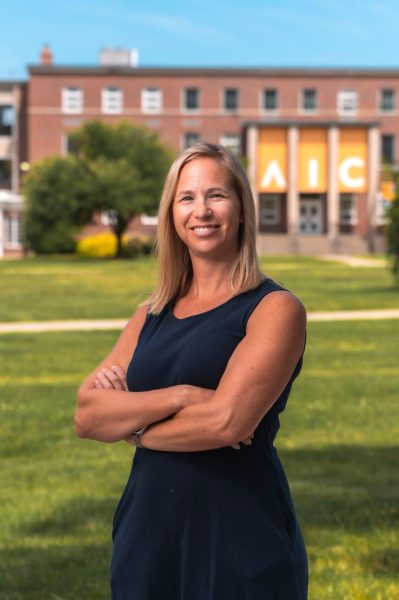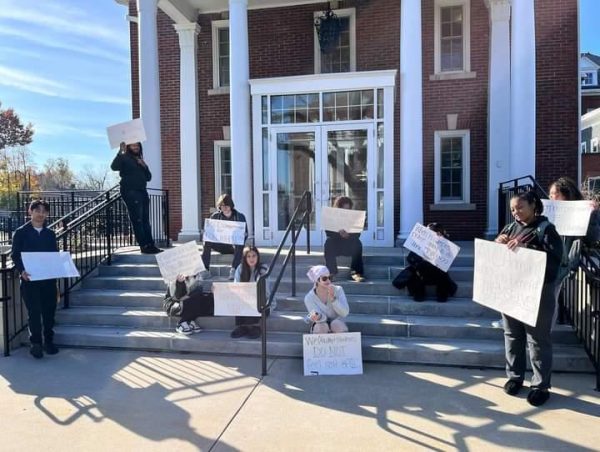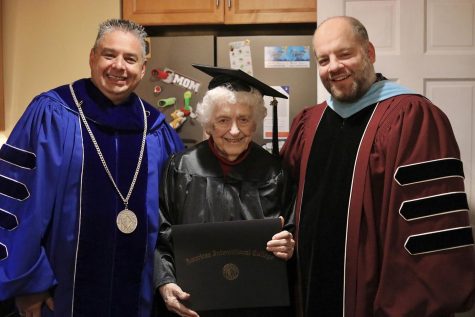Ray Muise: The other side of Mark Schand’s story

April 28, 2014
 A room filled with just ten students, a professor, and a man whose sole purpose for his visit (to our humble AIC Mac lab) is to tell his side of events.
A room filled with just ten students, a professor, and a man whose sole purpose for his visit (to our humble AIC Mac lab) is to tell his side of events.
Does this sound familiar?
It should, because back in February, this was the exact same scene orchestrated by AIC to bring Mark Schand to the Communication Department to tell the story of his innocence. Schand had spent the past 27 years behind bars for the 1986 murder of a young woman – a murder he always maintained he did not commit. He was freed after the sole available witness against him recanted his statement, and the district attorney declined to retry the case.
Months later, this same scene is re-created by retired Springfield Detective Raymond Muise, the man who investigated the case, and who came to AIC to talk of the Mark Schand case.
On October 4th, 2013, by order of Hampden Superior Court, Mark Schand was released from prison due to the factors of mistaken identity, death of two witnesses against him and the reversal of a statement by a third. A fourth witness at the Schand trial refused to testify.
Schand visited Prof. Mary Ellen Lowney’s journalism classes in the Mac lab to talk to a class of young, eager and aspiring journalists. There, Schand spoke to both early morning classes in a visit the drew considerable local media attention.
As Mark Schand was broadcasted on the local news and other media outlets people paid attention. One of those people was Raymond Muise, who is now security chief at MassMutual Finance Services. Muise asked to come and speak to the same students, telling about the same events through his perspective as the lead detective investigating the case.
Muise told students he worked for the Springfield Police Department for 26 years. The first five years in uniform, the next eight working burglaries and finally, the last 13 years as a homicide detective. He was assigned the Schand case when he 32 years old – his first case as a detective. He was the youngest to ever be a part of the homicide unit.
He told of his philosophy as a homicide investigator.
“I never wanted t lock up the wrong man,” said Muise. With confidence he continued, “I’ve only caught the wring man once but I was able to fix it and catch the right man.”
As he continued to tell his side of events the small class listened in awe as a story of honest, proper police procedure filled with fairness began to unfold. Hearing familiar names such as the Stokes brothers and Anthony Cook in a different light from Schand’s make sit all the more compelling. Unlike Schand’s side were the testimonies against Muise testimonies given with witnesses at the scene, and the details of the police work that went on behind the scenes following the murder of then 25-year-old Victoria Seymour, who was caught in the crossfire of a fight between Springfield and Hartford, Conn. Young men.
When AIC students were asked about how they felt about this new edition to the Mark Schand story, senior Michal Holland said the information made him think twice.
“Obviously the police have their own story, but I knew there was more to this than just some conspiracy to put young black men behind bars. That there had to be more facts involved and now that we have the police side of the story with real facts in it I’m definitely starting to question Mark Schand,” Holland said.
AIC freshman Alex Clark had something similar to say.
“I mean there’s always two sides to a story and the police do sometimes try to wrongfully convict young minorities but may or may not be the case,” Clark said.
“You hear it from the detective himself it definitely casts some doubt on his (Schand’s) story but at the same time he got released so there’s not much you can say or do,” Clark said.














